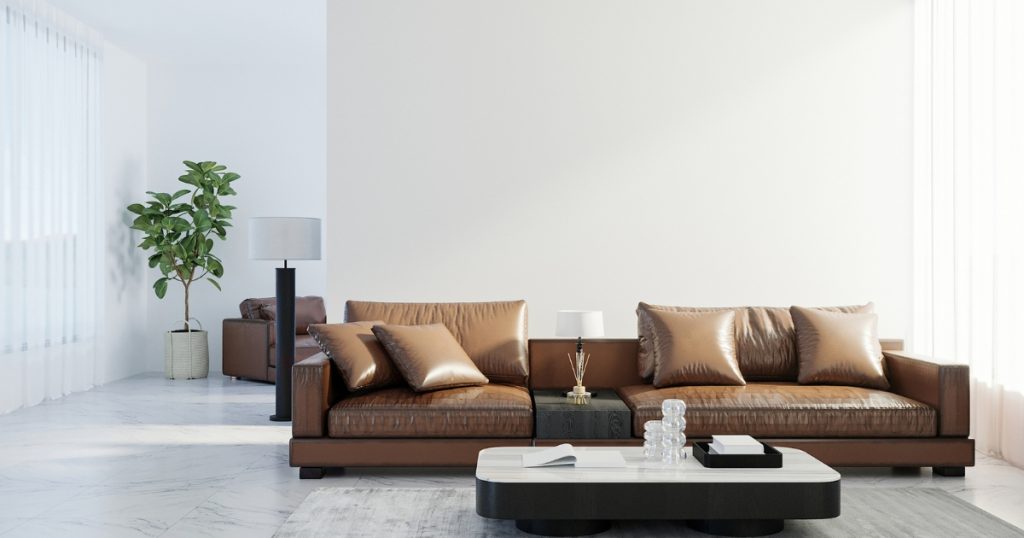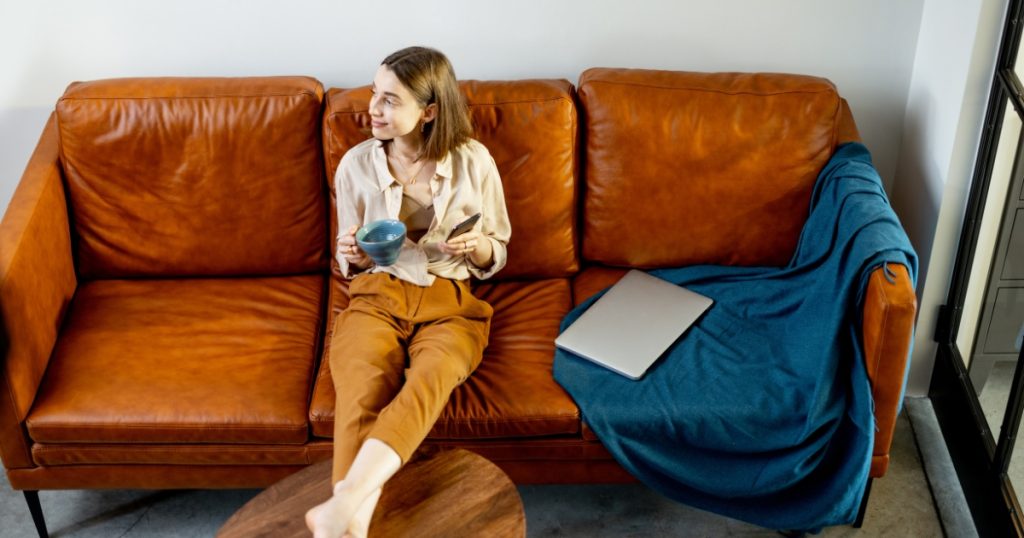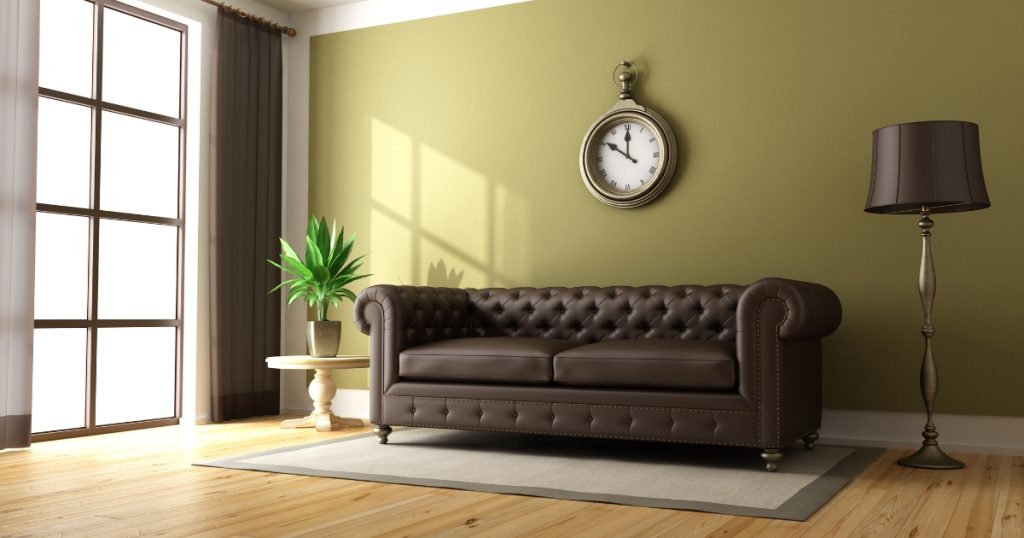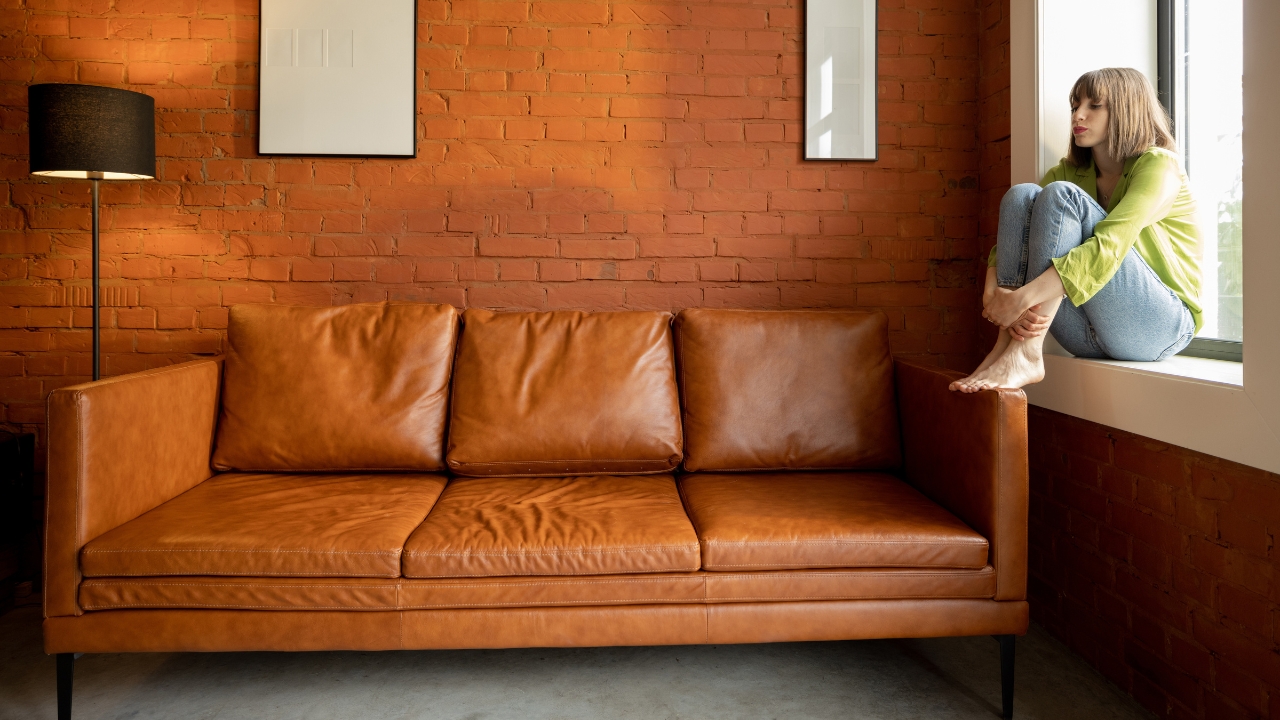Discover the benefits of leather conditioner for leather furniture. With experts’ tips on conditioning and maintenance, learn how to care for leather, avoid damage, and extend the life of your favorite pieces.
Thank you for reading this post, don't forget to subscribe!Leather sofas are a luxurious and classy addition to any home or office. They offer a timeless style, as well as comfort and durability, and are lovely on sofas, chairs, and more. But when neglected, leather can dry out, crack, and fade, losing its lustre and appearance. That’s where leather conditioner comes in.
Leather conditioner: Leather conditioner is an essential product for keeping your leather furniture and avoiding the purchase of new furniture. It’s like a lotion to your leather–it keeps it nice and soft and helps condition the hide against heat, humidity, and oils it may come in contact with. Here, we discuss why leather conditioner is crucial, how to pick the best kind, when and how to apply it, plus tips for keeping your leather furniture in good shape over time.
Why Use Leather Conditioner?
Leather is tough, but it’s also an organic material that needs a little TLC to keep it in peak shape. It requires no water or dilution, making it easy and convenient for leather maintenance. Maintaining Leather Furniture is at the mercy of many wear-and-tear factors, such as body oils, dirt, sunlight and heat, as these factors can all dry out and damage. Leather conditioner, on the other hand, is meant to defend your fine leather from damage caused by exposure to the elements, restore essential moisture, elasticize the fibres, extend the life of your leather, and give your leather a new shine.
These are the primary reasons why you should use a leather conditioner for furniture regularly:

Helps Prevent Drying and Cracking: Over time, leather can lose moisture, resulting in cracking and dry leather. Dry leather will tend to crack, peel , or become stiff. Regular conditioning keeps the leather moisturized and can prevent the issues described above.
Preserve Softness & Flexibility: When leather is not moisturized correctly, it can miss out on the oils that give it that ‘brand new’ feel. Conditioning leather will prolong its natural suppleness, making it comfortable and pliable.
Improves longevity: Well-cared-for leather is less susceptible to damage. Conditioner provides an extra defence against nicks, spills, and more.
Natural Shine: Over time, leather furniture can begin looking lacklustre, losing its shine and sheen. Impregnation will reactivate its natural shine, and it will look as good as new.
Guards Against Stains and Discoloration: Leather conditioner helps guard against everyday stains and discoloration from dirt, food, and drink spills by conditioning the surface.
When to Use Leather Conditioner?
While you may want to reach for the leather conditioner at the first signs of wear or damage, preserving any of your leather furniture long-term starts with regular upkeep. Leather furniture should be conditioned every 6-12 months, depending on the condition and wear exposure . That said, here are a few scenarios where conditioning is essential:
After Cleaning: When you clean leather furniture, remove some natural oils. Afterwards, using a conditioner can help return your oils and work to keep the leather hydrated.
If you Live in a Dry or Hot Climate: Depending on your environment, your leather can dry and brittle much faster. In such situations, the conditioner should be used more frequently to avoid cracking.
After Spills or Stains: If a spill occurs, wipe it off the leather and condition it right away. Clean to remove impurities and condition to return moisture to the affected area.
Dryness: Does your leather look dry, stiff, or even cracked? Those are all signs that it needs conditioning. Soak the product immediately to avoid damage.

Selecting Biothane How To Select The Right Leather Conditioner
Selecting the appropriate leather conditioner for your furniture is crucial to achieving outstanding results without causing damage. And with so many options on the market, it can be challenging to choose one. Here are a few things to think about when selecting a leather conditioner:
Leather Type: The type of leather will determine how it needs to be taken care of. Aniline or semi-aniline leathers are more fragile than pigmented or protected leather. Ensure the conditioner you buy works for the type of leather your furniture is made of.
Ingredients: Look for natural oils in a conditioner, like lanolin, mink oil, or beeswax. The se oils are effortless on the leather and give it the necessary moisture and protection. Avoid conditioners with strong chemicals or petroleum products , as they can break down the leather over time.
Fragrance: Some conditioners have a very strong fragrance that can remain after application. If you are sensitive to fragrances, search for a product that is unscented or lightly fragranced.
Reviews and Recommendations: It is important to check the reviews and recommendations from other users who also have leather furniture. There are many products that claim to be the best; however, real-world experiences are probably the most accurate source of information about how a conditioner works.
Brand: Choose well-known brands that are professionals in leather care. These companies frequently offer high-quality conditioners and have years of experience behind them.
How to use leather conditioner on furniture
Using a leather conditioner is easy, but there are a few steps you need to follow to do it right. Here is a step-by-step guide on how to condition a leather couch properly:
Step 1: Clean the leather to remove any dirt and debris.
Clean the leather well to remove dust, dirt, and oils before conditioning. Polish with a clean, soft, lint-free cloth and leather cleaner. Remember to clean it off gently so you don’t scratch it. If the leather is really grungy, opt for a leather cleaner or saddle soap that will help cut through the grease and grime.
Step 2: Test in an unobtrusive Spot
Leather conditioners may darken or change the texture of the leather slightly, so consider testing the product on an inconspicuous spot first. Rub a little bit of conditioner on a less visible spot and let it dry before inspecting it for indications of change. If the leather is looking nice and hasn’t changed in feel, you can go ahead and condition the entire piece.
Step 3: Condition with Soft Cloth Apply conditioner to the shoe with a clean, soft cloth.
Apply conditioner to the leather with a clean, soft cloth or sponge. Do not soak the fabric or pour the product directly onto the leather. Instead, massage the conditioner into the leather gently in a circular motion. Make sure you get every nook and cranny of the furniture —seams and corners included.
Step 4: Conditioner Absorption : Let the conditioner soak in.
Allow the conditioner to soak in for 15-20 minutes. You might see the leather darken after you apply it, but don’t worry ; it’s just the leather soaking it up, and it will return to its everyday shade once it’s dry.
Step 5 Buff and Remove Excess Conditioner
Once the conditioner has soaked into the cushion, wipe with a clean, dry cloth to buff the leather and remove any remaining product. This ensures the leather is not smeared with greasy residue (which attracts dirt and dust).
Step 6: Let the Leather Dry
Let the leather dry naturally in a place with good airflow. Do not put it in direct sunlight or use heat to dry it faster – the leather will dry out and crack.
Tips for Taking Care of Leather Furniture in the Long Run
But aside from conditioning, there are a few other things you can do to make sure your leather furniture stays around for years to come:
Shield from the Sun: Leather is susceptible to UV rays and will fade and dry out. Keep leather furniture out of direct sunlight or use window treatments to lessen exposure.
Dust-free: Leather surfaces can become covered in dust and dirt, causing them to appear dull. Use a soft cloth to routinely wipe your leather furniture clean. Never apply products that could harm the leather.
If you are concerned about leather care, don’t use chemicals. Leather is porous, and chemical substances used in many household cleaners can be harmful. Always have it cleaned with leather-care products to avoid staining or damage.
Act Fast on Spills: If you spill something on your leather furniture, use a soft cloth to blot it up immediately. Don’t rub, as this can work the liquid deeper into the leather. Condition the leather after cleaning to add moisture.
Leather Protector: For extra protection, use a leather protector or water-repellent spray. Thes e provide additional protection against stains and liquids, keeping your furniture looking brand new for longer.

Conclusion
Leather furniture is an expensive investment that can last for years if properly cared for. With a high-quality leather conditioner, you can protect your furniture from damage, restore its softness and shine, and ensure it stays looking as good as the day you bought it. With regular conditioning and other standard care measures, your leather furniture will be a lifelong, beautiful, and functional centerpiece.
Remember that leather is an organic material and deserves tender, loving care. With the proper items and techniques, you can clean, condition, and maintain your leather furniture so that it enjoys your company for years to come.
FAQs on Leather Conditioner for Leather Furniture
How often do I need to condition my leather furniture?
Condition It Every 6-12 Months Depending on exposure and use, the Leather finish should be conditioned regularly. You may need to condition more often if the leather feels dry or stiff.
Can I apply any conditioner to my leather furniture?
No, you must use a leather conditioner. Inferior conditioners might contain chemicals that are harmful to the leather. Read the label for ingredients and choose products containing natural oils and no petroleum-based additives.
Will leather conditioner make my furniture darker?
Directions: The greases in the conditioner will cause the leather to temporarily darken as they are absorbed. Buff with a rag to assist the absorption and remove excess moisture. This reaction will usually be temporary , and the leather will return to its original color once dry.
How can I get a stain out of my leather couch?
For small stains, simply pat them with a clean cloth. For more stubborn stains, use a leather cleaner or saddle soap and follow with a conditioning product. Refer to manufacturer recommendations for cleaning.
Can I apply a leather conditioner to other leather items like jackets or bags?
Yes, you can also use leather conditioner. Leather conditioner: It can be used on other leather products like jackets, handbags, and shoes. But test the conditioner in a less visible spot to ensure it won’t cause discolouration or damage.
